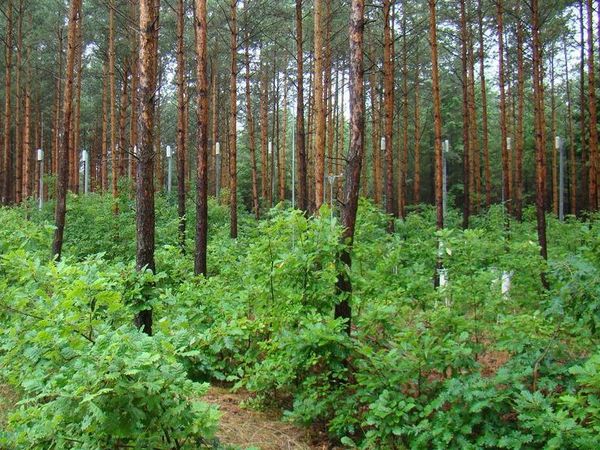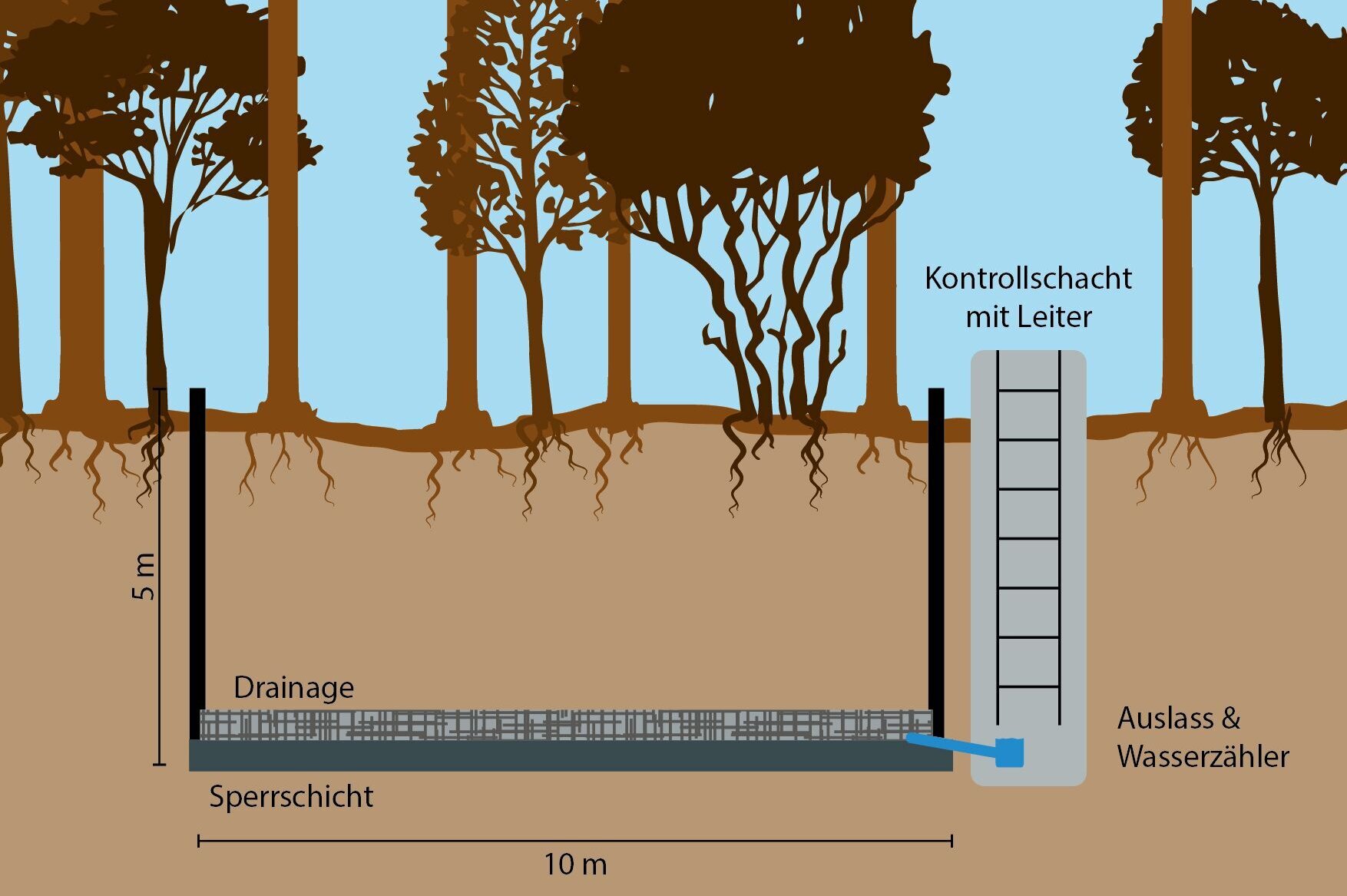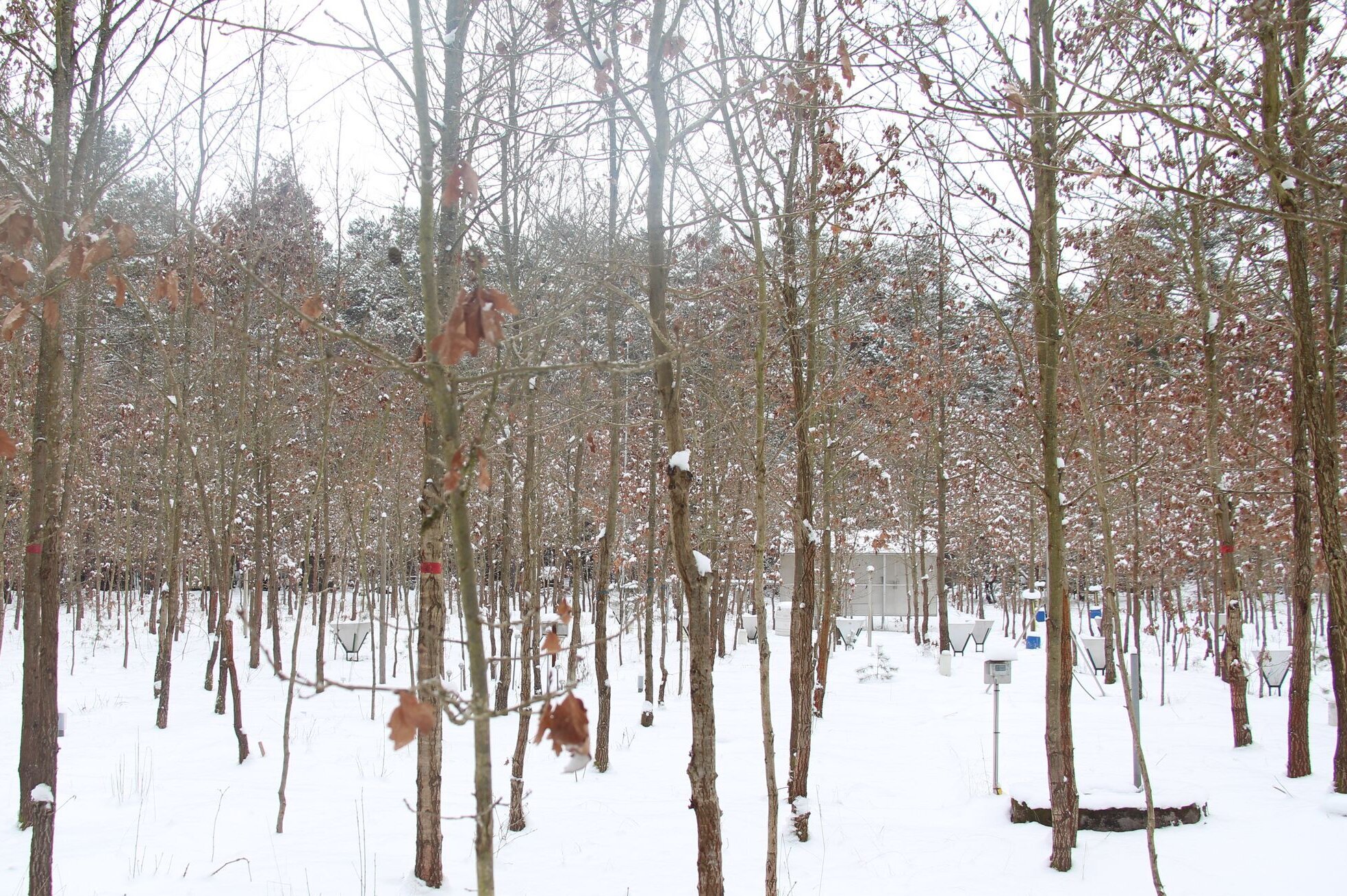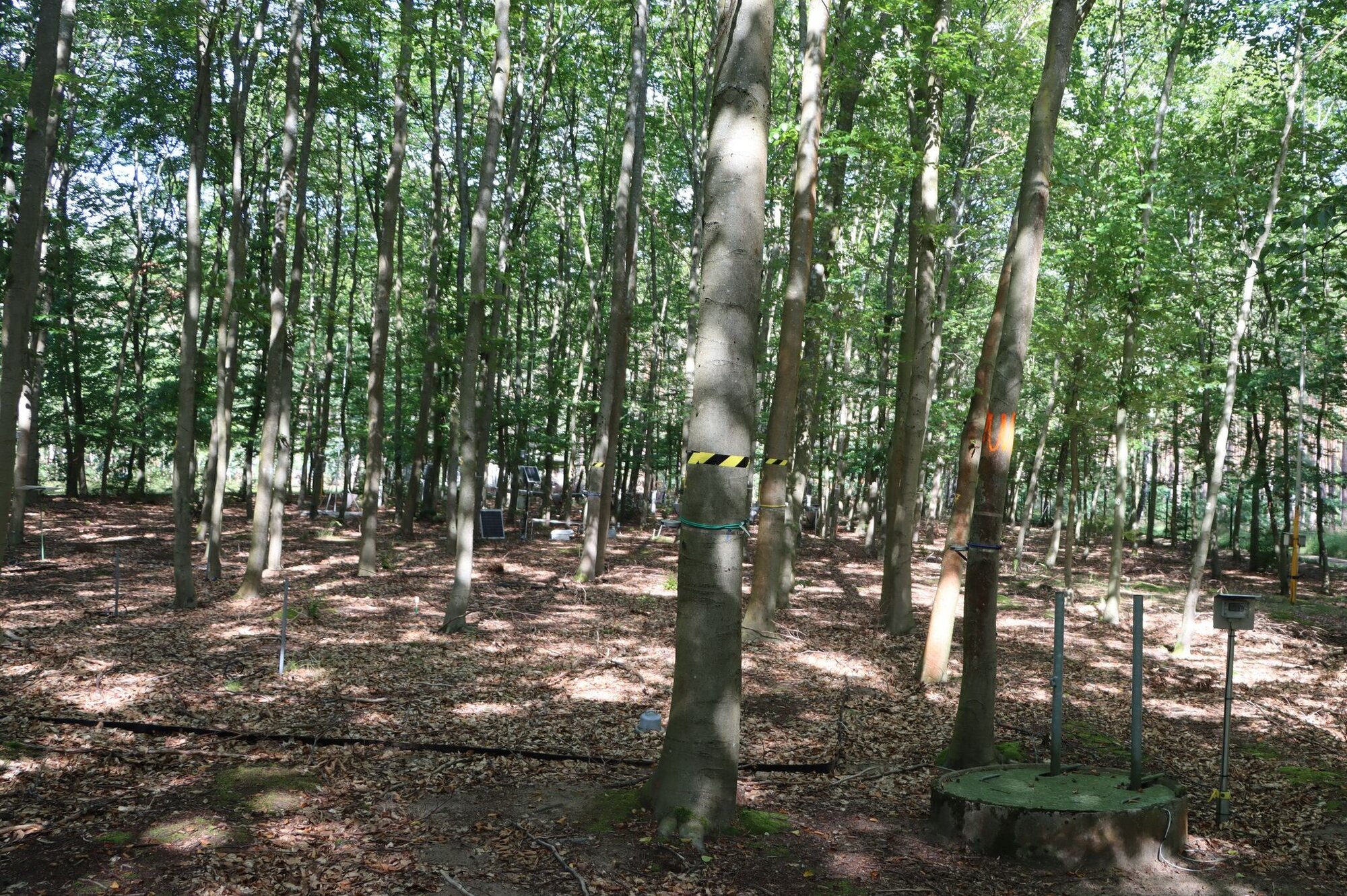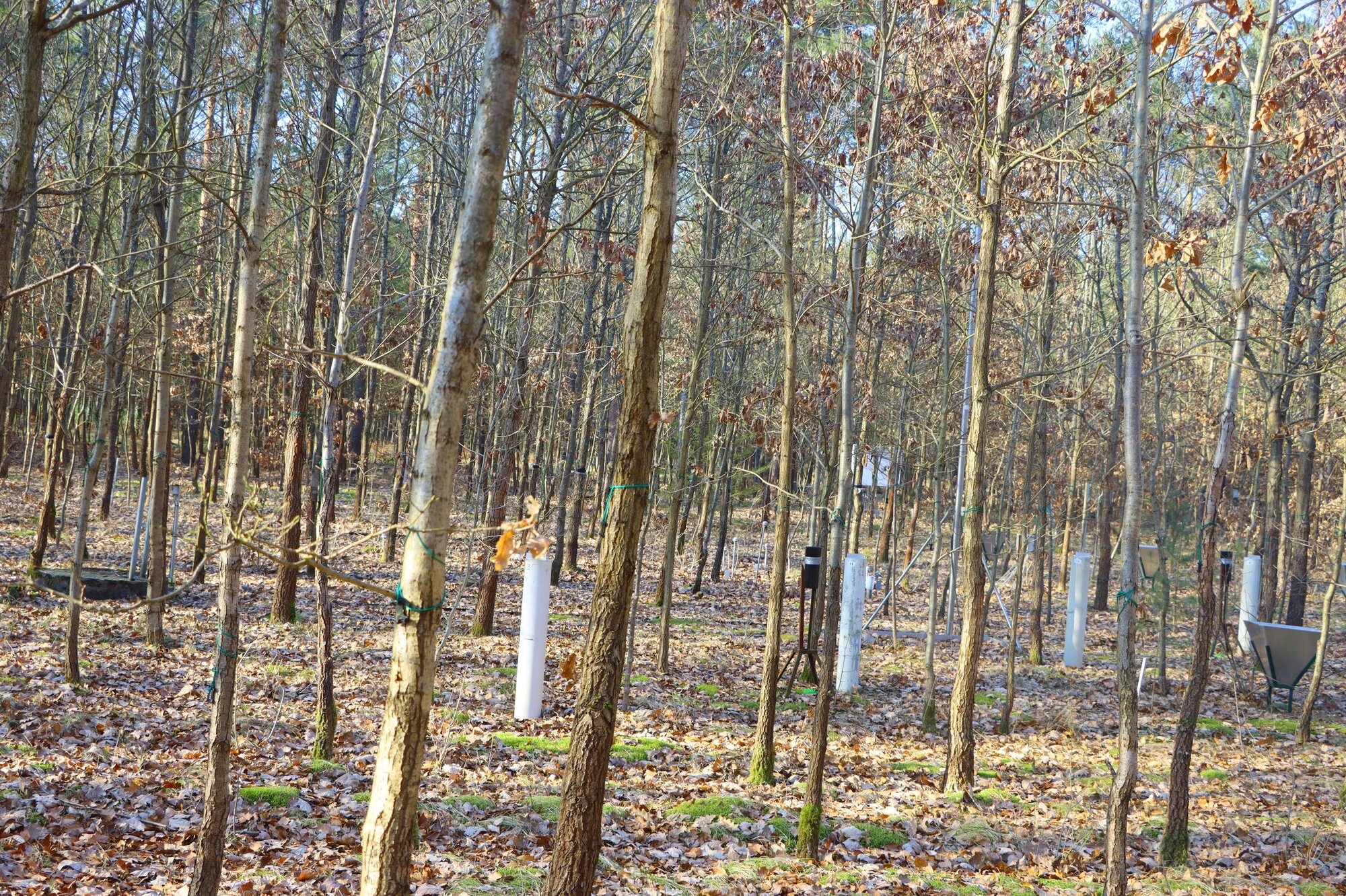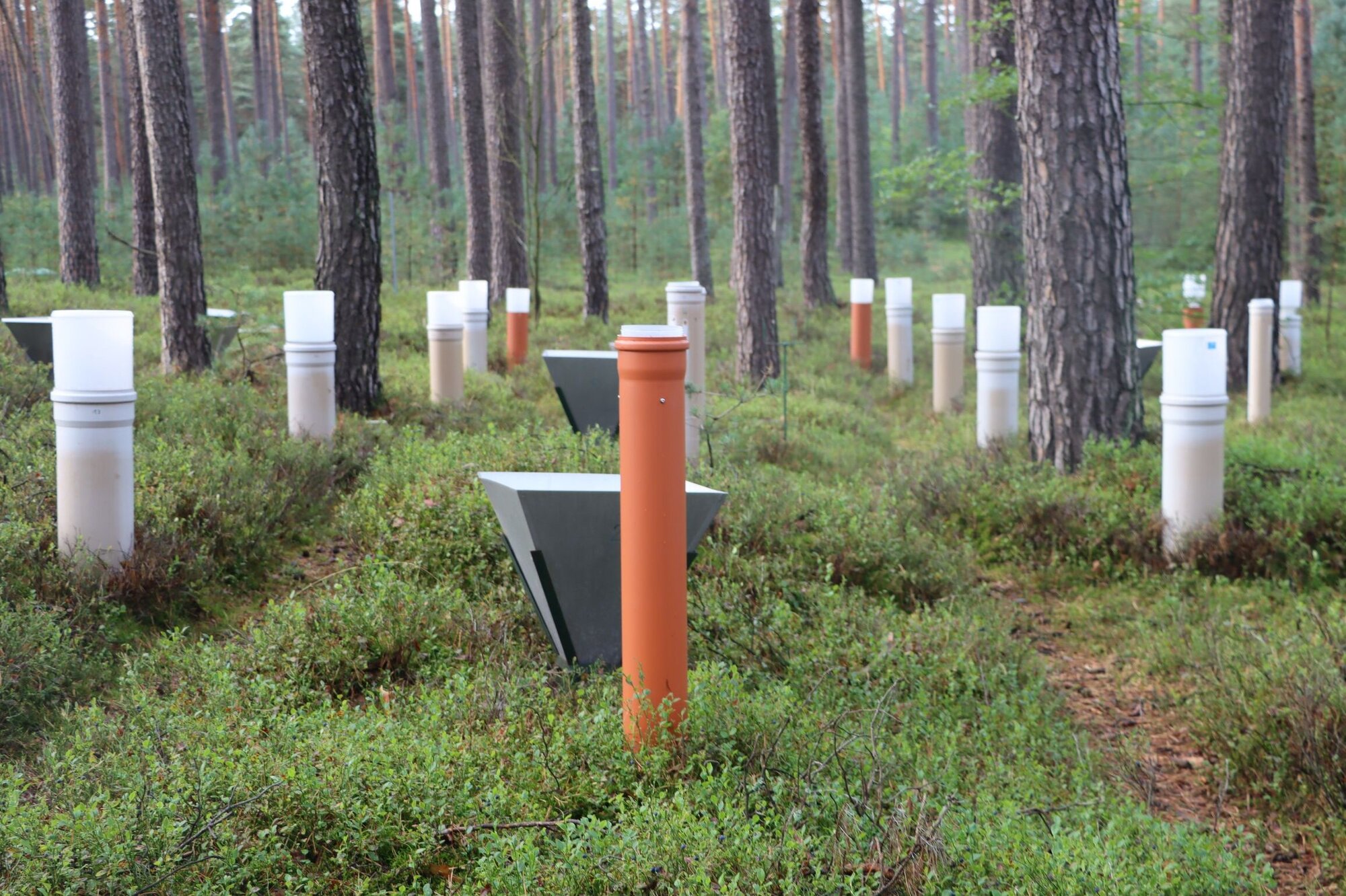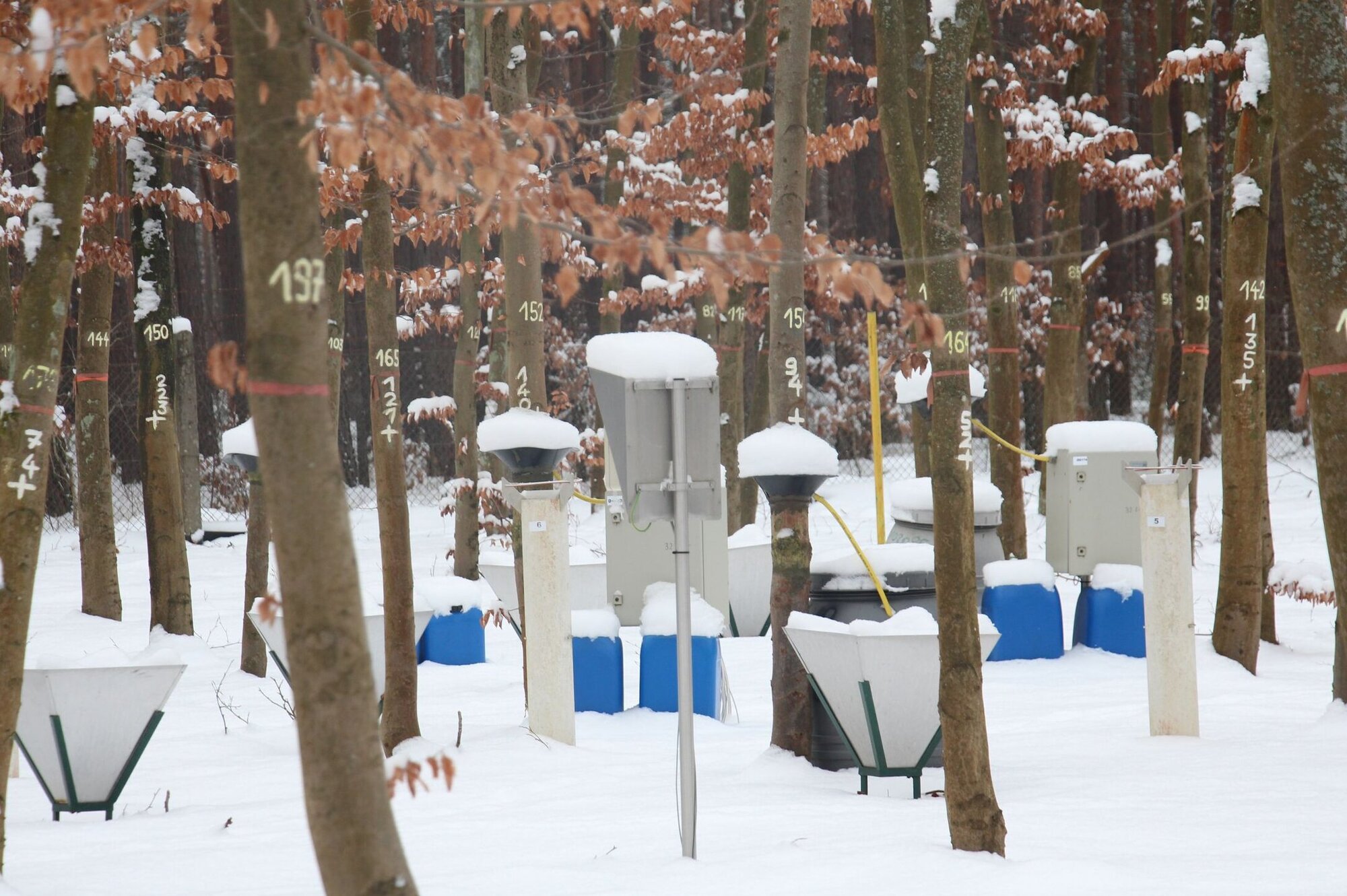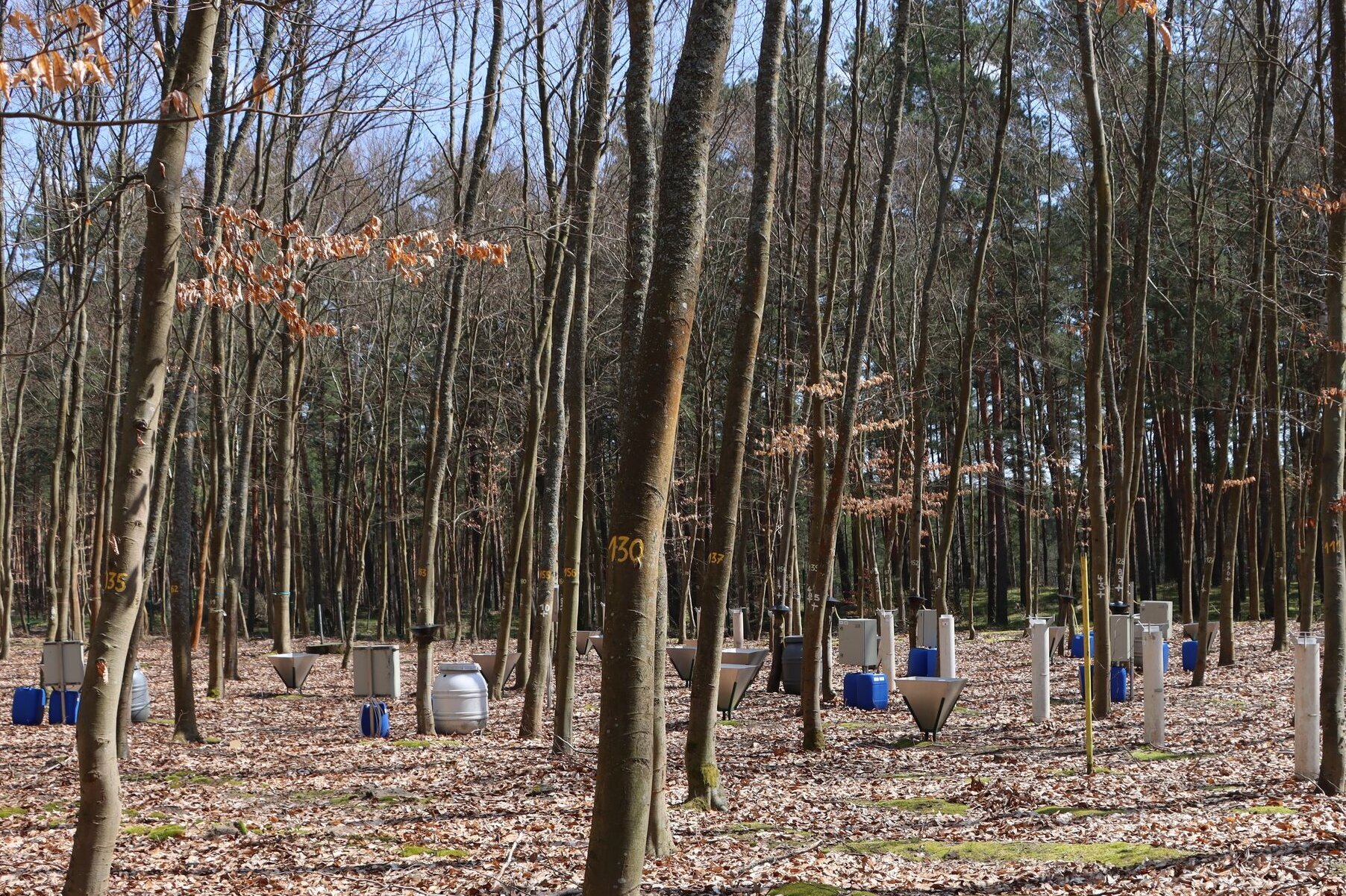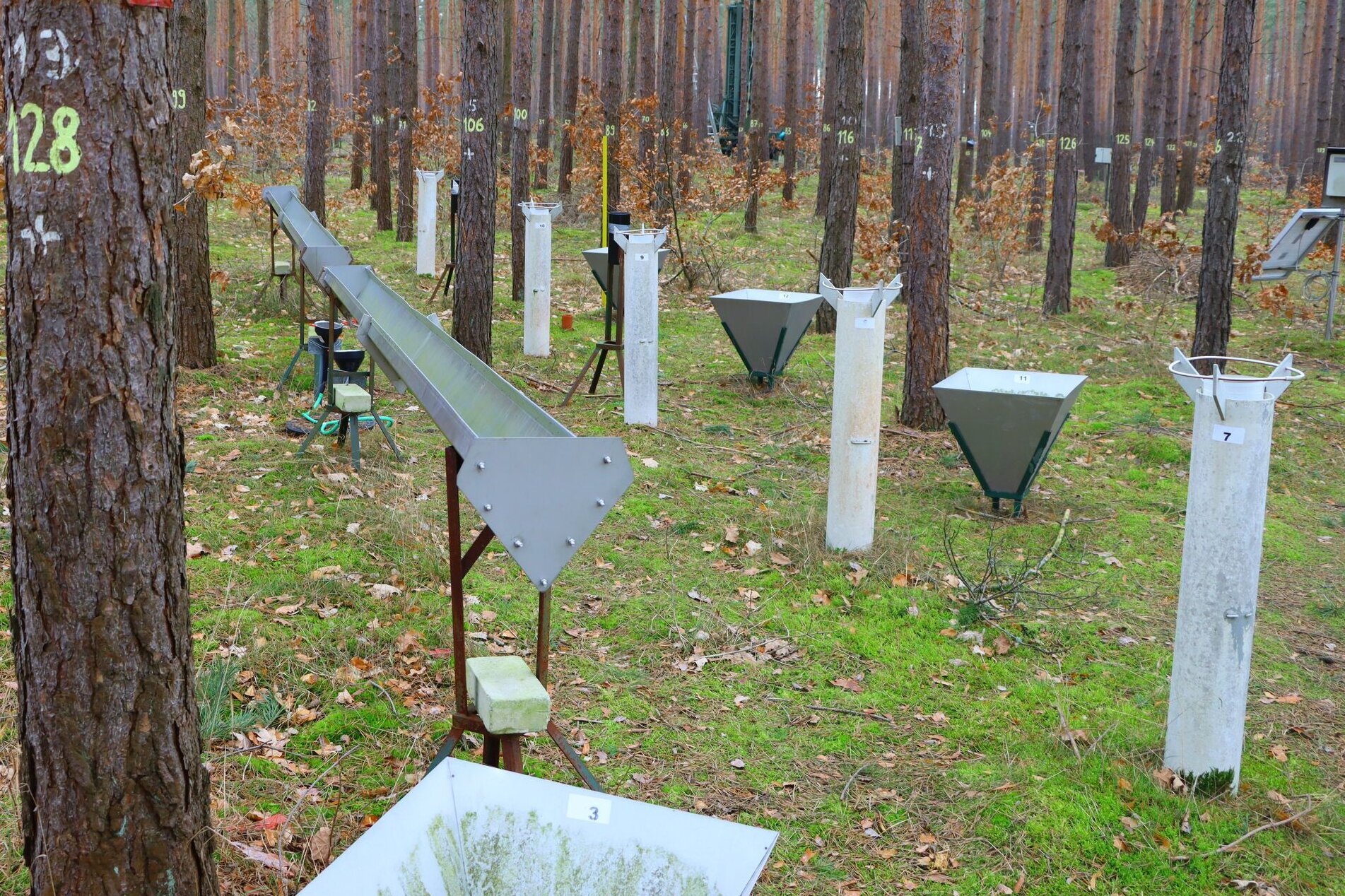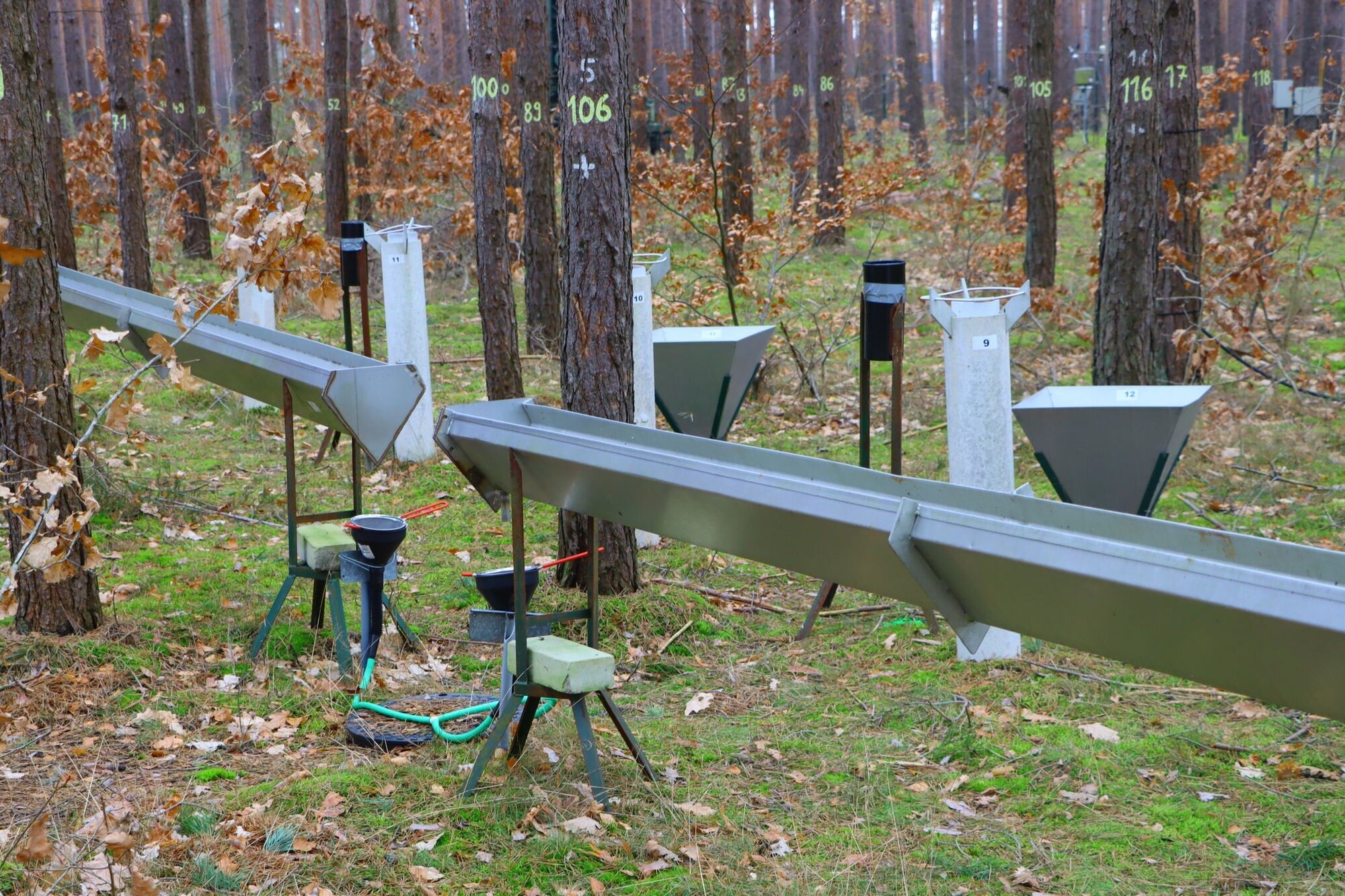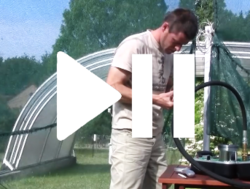Expertise
The role of tree types on the agricultural water household
Marco Natkhin, Tanja Sanders | 27.02.2025
The impact of different tree species on the course of new ground water development of is a focus of our study with large lysimeters.
We are interested in the role of different tree types on the agricultural water household, especially water use within the vegetation period. Two questions stand at the heart of the matter:
- How does the tree type influence the amount and time course of the new ground water development?
- Which possibilities does forestry provide to control the shape of growth-relevant hydrological factors in the individual phases?
In order to make statements on the changes in the water household of various tree types, we work with the ecological research station in Eberswalde Britz with large lysimeters. Lysimeters are boxes filled with soil which make it possible to measure the amount and quality of the water that seeps through the soil.
It can be seen that the tree type as a significant meaning on the new development of ground water under forests. The evergreen pine, with its high tree-top interception, seeps much less water into the ground than the beech which sheds its leaves for the winter and evaporates much less water from the crown. Also, the smooth bark of the beech leads to a trunk outflow. This increases the amount of new ground water development and makes the beech a “water factory” for the forest.
The forest conversion planned and practiced for the most part in large sections of the northeastern German lowlands from conversion pine forests into pine beech mixed populations has had a positive effect on the agricultural water household. In the winter half year, the trunk outflows of the beech led to additional deep seepage at the base of the trunk, and in the summer half year, the trunk outflow level increased the upper soil level dampness of the trees. This effect ultimately has a positive effect on the growth of both types of trees, beech and pines.
Through our research- based recommendation, forestry can develop strategies for forest conversion to stabilize the wood production level and at the same time the ecological welfare effects for water soil and climate.

